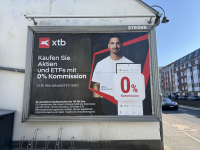
Cet article est seulement disponible en anglais. Désolé.
Factor investing in bonds is making inroads with both institutional and wholesale investors, according to a study by Invesco. However, there’s still a perceived lack of suitable products.
Approximately 70 percent of institutional investors and 78 percent of wholesale investors who took part in the study, which was based on interviews with more than 240 institutional and wholesale factor investors who collectively manage more than $ 2.5 billion, now regard the approach as useful. This compares to 62 and 57 percent respectively in 2018. Yield/carry is seen as the “top factor”, followed by liquidity, value and quality.
The further rise of factor investing in bonds is in line with the general trend of factor investing becoming more mainstream, according to Georg Elsaesser, senior portfolio manager, Quantitative Strategies at Invesco. ‘Early adopters of factor investing want to do more with their factor allocations, such as the application of active and tailor-made strategies and expanding to fixed-income securities. Existing factor investors have increased their allocation. More than half of the respondents plan to increase their allocation in the coming three years, and this pattern is likely to continue in the coming years.’
Lack of suitable products
The increasing interest in factor investing in bonds is, however, accompanied by a shortage of suitable products. Almost nine out of ten respondents described this investment category as not being well covered by the current range of factor products.
The study also shows that respondents have once again increased both the number of factors they focus on and the use of strategies focused on multiple factors. They have also more actively taken decisions about which factors to included or exclude.
Among others, they have reduced their exposure to the value factor and increased the use of other factors such as momentum, quality and low volatility. Despite some doubt as to whether the value factor remains equally effective as it was in the past, it remains the most popular factor among both wholesale and institutional investors.
Active strategy
The majority of factor investors nowadays opt for an active strategy through separate mandates, mixed funds and products traded on the stock exchange. Larger institutional and wholesale investors prefer separate mandates, while medium-sized and small investors prefer mixed investment funds. Products traded on the stock exchange are popular with all types of investors when it comes to the implementation of active strategies.
Whereas investors still implement strategies passively via a factor index, almost half of the respondents prefer a customised approach to index design. According to Elsaesser, this is partly due to the fact that investors increasingly believe that exploiting the benefits of factor investing is partly dependent on a dynamic approach to implementation. ‘Most respondents employ a long-term vision regarding their exposure to factors, but this does not mean that they can afford to take a static approach to their allocation.’












